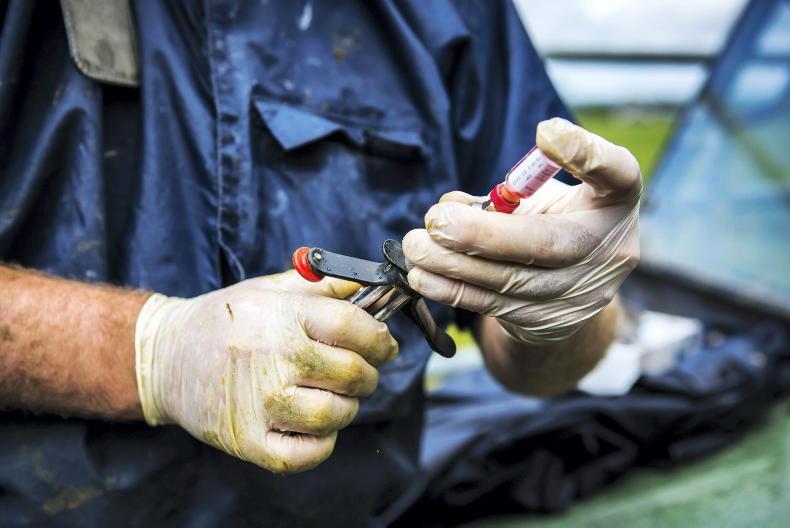Minister for Agriculture Charlie McConalogue has confirmed that the average timeframe between when cattle are tested positive for TB and removed for slaughter from the reactor farm is 17.3 days.
This, he said, is based on the fact that as of 4 October 2023, 20,047 cattle have been removed by the Department of Agriculture from reactor farms under the TB eradication programme.
The Minister was responding to parliamentary questions from Cork TD Colm Burke on the matter, who was seeking to highlight the delay in the removal of TB reactor cattle off farms.
Minister McConalogue highlighted that there are “circumstances outside of my Department’s control where the removal of reactor animals must be delayed”.
Withdrawal period
These circumstances, he said, include when withdrawal periods are observed for medicated animals and inconclusive animals that may be required to undergo further gamma interferon (GIF) blood testing.
The Minister also said that there can be reactor animals who are more than 90% through their gestation who cannot be moved until they have calved on farm.
“All of these circumstances are also accounted for in the average timeframe outlined above,” he noted.
Process
Minister McConalogue noted the process through which cattle are tested for TB and subsequently removed off farms.

The Minister answered questions on TB reactor animals this week. \ Philip Doyle
He said that bovine TB on farms is monitored through the use of the single intradermal comparative tuberculin test, more commonly known as the skin test, and, if applicable, the removal of reactor animals identified in herds.
When an animal is tested for TB, the vet makes two visits on separate days to complete the testing cycle.
“My Department are notified of test results by the vet through the animal health computer system. Once eligible reactors have been identified in a herd, the on-farm market valuation (OFMV) process begins.
“The OFMV Scheme is the principal compensation measure available to farmers who experience a TB breakdown on their herd.
"The scheme aims to compensate farmers up to the open market value of an animal as if they were not affected by disease, subject to ceilings,” he said.
Minister for Agriculture Charlie McConalogue has confirmed that the average timeframe between when cattle are tested positive for TB and removed for slaughter from the reactor farm is 17.3 days.
This, he said, is based on the fact that as of 4 October 2023, 20,047 cattle have been removed by the Department of Agriculture from reactor farms under the TB eradication programme.
The Minister was responding to parliamentary questions from Cork TD Colm Burke on the matter, who was seeking to highlight the delay in the removal of TB reactor cattle off farms.
Minister McConalogue highlighted that there are “circumstances outside of my Department’s control where the removal of reactor animals must be delayed”.
Withdrawal period
These circumstances, he said, include when withdrawal periods are observed for medicated animals and inconclusive animals that may be required to undergo further gamma interferon (GIF) blood testing.
The Minister also said that there can be reactor animals who are more than 90% through their gestation who cannot be moved until they have calved on farm.
“All of these circumstances are also accounted for in the average timeframe outlined above,” he noted.
Process
Minister McConalogue noted the process through which cattle are tested for TB and subsequently removed off farms.

The Minister answered questions on TB reactor animals this week. \ Philip Doyle
He said that bovine TB on farms is monitored through the use of the single intradermal comparative tuberculin test, more commonly known as the skin test, and, if applicable, the removal of reactor animals identified in herds.
When an animal is tested for TB, the vet makes two visits on separate days to complete the testing cycle.
“My Department are notified of test results by the vet through the animal health computer system. Once eligible reactors have been identified in a herd, the on-farm market valuation (OFMV) process begins.
“The OFMV Scheme is the principal compensation measure available to farmers who experience a TB breakdown on their herd.
"The scheme aims to compensate farmers up to the open market value of an animal as if they were not affected by disease, subject to ceilings,” he said.







 This is a subscriber-only article
This is a subscriber-only article










SHARING OPTIONS: